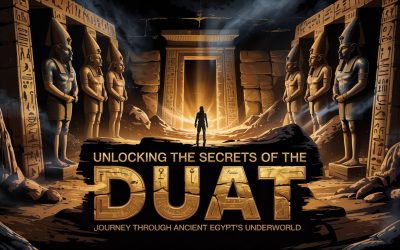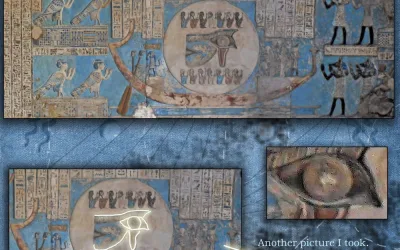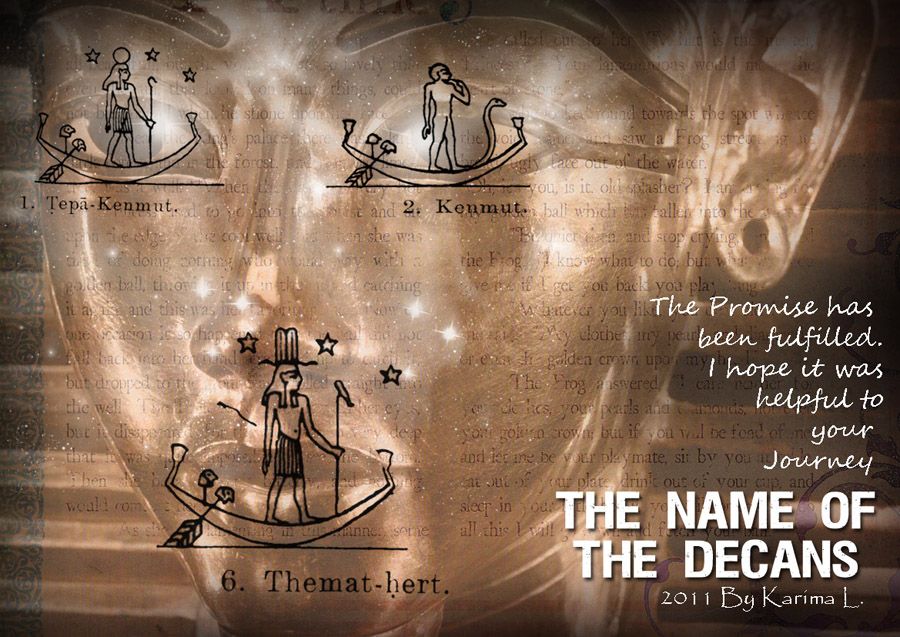The Two Eyes of Ra

The Ancient Sun and Moon, also known as the Ancient Sun and Moon, were regarded as the Two Eyes—the Eyes of Ra. One burning bright with the fire of the Sun. The other, silver and calm, the Eye of the Moon. Both eyes did not only see… they guided, protected, and revealed.
The Sun Eye would travel each day across the sky, pulled by a sacred barque, watched by gods and mortals alike.
The Moon Eye would follow later, slipping silently into the night, whispering truths only the heart could hear.
It is said that one eye could see the deeds of the day, and the other saw the secrets of the soul.
The Ancient Sun and Moon were woven into the very fabric of ancient beliefs, symbolizing the eternal struggle between light and darkness. The Sun Eye would travel each day across the sky, pulled by a sacred barque, watched by gods and mortals alike. The Moon Eye would follow later, slipping silently into the night, whispering truths only the heart could hear. It is said that one eye could see the deeds of the day, and the other saw the secrets of the soul.
This act symbolized the eternal bond between the Ancient Sun and Moon and their role in the cosmic balance.
Ra, the First Lord of Light, was not alone when he created. From his own being, he brought forth the air (Shu) and the mist (Tefnut).
He sent his eye—the first eye—into the depths of the celestial sea to find them.
But when the eye returned… it found Ra had replaced it with another.
This interplay between the Ancient Sun and Moon illustrates not just their celestial roles, but also their influence on the rhythm of life and death.
Anger stirred in that first eye. Jealousy.
To make peace, Ra gave it great power and placed it in the sky as the Sun.
And the second, the calmer one, became the Moon.
In this way, balance was born from betrayal… and the heavens received their two keepers.

Aah, the Moon, was a reflection of the Ancient Sun and Moon’s duality, embodying the harmony between the two celestial forces.
His boat, a representation of the Ancient Sun and Moon’s journey, was called the “Boat of a Million Years.”
He was both the keeper and the guardian of the Ancient Sun and Moon’s mysteries.
When the Eye of Horus was shattered, it was the wisdom of the Ancient Sun and Moon that guided Thoth to restore it.
The Moon as Aah, the Silent Guardian
In that timeless moment, the Ancient Sun and Moon emerged, embodying sight, power, balance, and wisdom.
The Moon was not simply a light, but a being. He was Aah. He was Thoth. He was the calm one.
He wore the lock of youth, the crescent upon his brow, the serpent whispering above his eyes.
The Sun and Moon were manifested not just as celestial bodies, but as integral parts of the Ancient Sun and Moon’s philosophy.
His boat was called the “Boat of a Million Years.”
It floated not on water, but across the night—the Duat.
He held time in his hands, measuring the hours of sleep and shadow, guiding the dead and the dreaming.
The sun’s heat, a gift from the Ancient Sun and Moon, was the warmth of creation.
Some saw him as Osiris, some as Min.
Yet always he was silent, gliding past the dark edge of the world… watching.
It was he who found the Eye of Horus when it was shattered by Seth and cast into the black.
Thoth found every piece. He mended them with care. And as he restored the eye, the full moon was born again.
The Wadjet, a symbol created through the influence of the Ancient Sun and Moon, represented healing and resurrection.

Even today, the legacy of the Ancient Sun and Moon is drawn, worn, and remembered.
The Creation and the Celestial Sea
Before there was land, before temples, even before names—Ra floated alone in the great dark sea.
He was a thought, a whisper in the void.
And then he willed himself into being.
The journey across the sky was symbolic of the Ancient Sun and Moon’s eternal cycle of rebirth.
In darkness, the Ancient Sun and Moon witnessed the struggles, guiding souls through the Duat.
From his own essence he created the first gods, and from his breath came light and form.
It was from this timeless moment that the Sun and Moon were formed (Eye of Ra and Eye of Horus)—not as objects, but as manifestations of sight, power, balance, and wisdom.
Through their unity, the Ancient Sun and Moon created a harmony of existence.
All beings were reminded of the lessons taught by the Ancient Sun and Moon.
The sun’s heat was the warmth of creation.
The moon’s reflection, the mirror of all that was hidden.
Wadjet – The Sacred Eye
In the priest’s dream, the Ancient Sun and Moon guided him to a greater understanding of the universe.
The Eye of the Moon, broken by battle and remade by Thoth, became known as the Wadjet.
A symbol of healing. Of resurrection.
It was not just sacred—it was living. A symbol that could be divided into parts, each holding a mathematical fraction, each part a sense or power of the human being.
The two figures embodied the essence of the Ancient Sun and Moon, revealing their truths to him.
Sight. Thought. Touch. Hearing. Smell. Taste.
All found their measure in the eye.
Even today, the Eye of Horus is drawn, worn, and remembered.
Because some things do not fade—they shift.
The Sun Boat and the Night Boat
Each day, the Sun would rise in the east aboard his golden ship.
Ra would sail across the sky, through the hours of day, and each god had his station in this journey.
But when the Sun dipped below the horizon, the journey was far from over.
To the ancients, the eyes of Ra were reflections of the Ancient Sun and Moon—principles of balance and wisdom.
He entered the Duat—the underworld—and boarded the Night Boat.
In darkness, he passed gates, guardians, and serpents.
Each night, Ra battled Apep, the great chaos serpent.
And only by triumph could he be reborn again at dawn.
It was the Moon that watched this battle, glowing as a guide for those who walked the earth… and those who had left it.

Reflections of Balance
The Ancient Sun and Moon’s teachings were not mere superstition; they were spiritual geometry.
The ancient Egyptians did not see the world in black and white, but in rhythm.
A rhythm of day and night. Light and shadow. Order and chaos.
The Sun and the Moon were not rivals. They were dancers in an endless cycle.
A promise that light would always return, and darkness would always pass.
They believed that we, too, have two eyes: one that looks outward… and one that looks inward.
This duality is eternally represented by the Ancient Sun and Moon.

A Whispered Vision: The Keeper of the Eyes
Through the influence of the Ancient Sun and Moon, we learn to navigate our own lives.
They say that once, during the reign of the 18th Dynasty, a temple priest had a dream beneath the stars of Heliopolis.
In the vision, he stood between two rivers—one golden, one silver—and two boats floated toward him. On each sat a figure cloaked in light.
The first was radiant, his skin the color of fire, his gaze blinding with knowledge. He was the Sun’s keeper.
The second shimmered in silence, wrapped in the veil of the night sky. His voice was a breath, a hush, a hymn. He was the Moon’s guide.
Together they whispered:
“We are the watchers. The two truths. The breath of vision. One to see what is… one to see what might be.”
When the priest awoke, he carved their image onto the wall—one eye above a rising sun, the other above a crescent moon.
It remained there long after the sand swallowed his name.
The Two Eyes as Symbols: A Mirror for the Soul
To the ancients, the eyes of Ra were not just deities or cosmic bodies.
They were principles of balance—the outward world of action, and the inner world of wisdom.
- The Sun Eye represents life, strength, clarity, and conscious vision. It sees what is visible and holds the fire of judgment.
- The Moon Eye, by contrast, holds mystery, healing, and introspection. It guides through dreams, emotion, memory.
To walk in Ma’at (truth), one had to learn to see with both eyes.
To act in the day, but understand in the night.
To speak boldly, and to listen in silence.
This was not superstition—it was spiritual geometry.
🙋 Frequently Asked Questions
Q: What were the Two Eyes in ancient Egyptian belief?
A: The Two Eyes symbolized the sun and the moon—also known as the Eye of Ra and the Eye of Horus or Wadjet. Together, they represent dual forces of light: one outward and fiery, the other inward and reflective.
Q: Was Ra truly the only god in Egyptian mythology?
A: No. Ra was a central creator figure, but not alone. Ancient Egyptian cosmology included many gods like Shu, Tefnut, Osiris, Thoth, and others who played roles in creation, balance, and transformation.
Q: What is the “Boat of a Million Years”?
A: This was the name given to the Moon’s celestial vessel—a mythic boat that sailed across the night sky and the underworld, carrying divine beings and souls on their eternal journey.
Q: What happened to the Eye of Horus?
A: According to myth, it was damaged during the battle between Horus and Seth. Thoth, god of wisdom, found and restored it—symbolizing healing, restoration, and spiritual integrity.
Q: How can I apply this symbolism today?
A: Let the Sun Eye remind you to act with courage and purpose. Let the Moon Eye teach you to reflect, heal, and dream. In every challenge, ask: “Which eye am I seeing through now?”

Final Thoughts
There is still mystery in the sky.
Though we map the stars and measure time, the ancient truth remains:
the sun warms the body, but the moon speaks to the soul.
When you look up tonight, remember—
you are not simply watching light.
You are watching a story that has sailed across time.
✨ Love ancient Egyptian myths? Bookmark this article and share it with a fellow seeker of ancient truths.
🌓 Follow me for more stories whispered from the sands of time…



